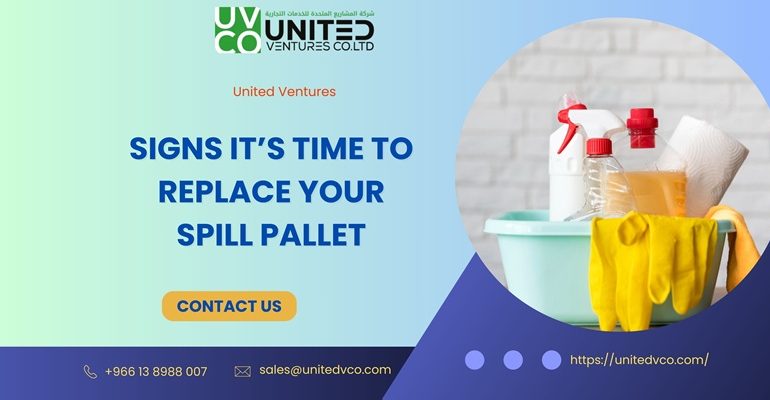If you’re managing oil drums, chemical containers, or hazardous liquids in Saudi Arabia, chances are you rely heavily on a Spill Pallet. But here’s the real question: how do you know when it’s time to replace or upgrade one? Just like any other piece of safety equipment, spill pallets don’t last forever.
Why Spill Pallets Matter More Than You Think
In industries like oil & gas, manufacturing, or even food processing, pallets act as silent protectors. They catch leaks before they spread, safeguard workers from accidents, and keep your facility compliant with environmental regulations. According to theU.S. Environmental Protection Agency (EPA) (Source), secondary containment systems are not just best practice—they’re often mandatory for safety and environmental reasons.
Common Signs It’s Time for Replacement
While most spill pallets are built tough, they face daily wear and tear in Saudi Arabia’s demanding industrial settings. Here are some telltale signs you shouldn’t ignore:
- Cracks or warping: Even small fractures can compromise containment capacity.
- Corrosion or chemical burns: Certain chemicals slowly eat away at plastic or steel surfaces.
- Reduced weight capacity: If pallets bend under normal load, they’re no longer reliable.
- Pooling outside the sump: Indicates compromised structural integrity.
Upgrade vs. Replace: What’s the Smarter Move?
Not every issue calls for a complete replacement. Sometimes, an upgrade can extend the life of your spill pallet. For example:
- Adding ramps or modular connectors to increase capacity.
- Installing covers to protect against sandstorms and heat exposure in Saudi environments.
- Switching to higher-grade polyethylene pallets designed for aggressive chemicals.
If your pallets are more than five years old or exposed to high-risk chemicals daily, upgrading may be cheaper in the long run than repeated repairs.
- promised structural integrity.
Upgrade vs. Replace: What’s the Smarter Move?
Not every issue calls for a complete replaceme
Cost vs. Risk: Why Waiting Too Long Hurts
Think of a spill pallet as a seatbelt. You might not notice its importance until the moment it fails. The costs of cleanup, worker injuries, or regulatory fines can far exceed the price of a new pallet. In fact, a single hazardous spill can cost industries thousands in damages, according to OSHA reports (Source).
Choosing the Right Option in Saudi Arabia
Industrial sites in Saudi Arabia deal with extreme conditions—high heat, sand, and exposure to harsh chemicals. When shopping for replacements or Spill Kit Wholesale, look for suppliers who provide durable, UV-resistant materials and designs tested for Middle Eastern climates.
For industries where spillage is constant, it’s worth reading more about The Top Industries that Depend on the Use of Chemical Absorbents. It highlights how critical containment systems are across oil, chemical, and even logistics sectors.
Quick Checklist Before You Decide
- Inspect pallets monthly for visible damage.
- Check manufacturer’s recommended lifespan.
- Audit storage practices—overloading shortens pallet life.
- Always keep a spare pallet ready for emergencies.
FAQs on Spill Pallet Replacement
1. How long does a spill pallet usually last?
Typically, 3–7 years depending on usage, chemical exposure, and environmental conditions in Saudi Arabia.
2. Can damaged spill pallets be repaired?
Minor scratches may be manageable, but cracks or chemical burns often require full replacement for safety compliance.
3. What’s the difference between plastic and steel spill pallets?
Plastic is lightweight and corrosion-resistant, while steel handles heavy loads and extreme conditions better. Your choice depends on chemical type and site environment.
4. Are spill pallets legally required?
Yes, in many cases. Compliance regulations vary, but OSHA and EPA guidelines stress their importance for hazardous material storage.
Final Thoughts
In the fast-paced industries of Saudi Arabia, ignoring the signs of a worn-out spill pallet can be costly. Regular inspections, timely upgrades, and choosing the right replacement keep both workers and the environment safe. The takeaway? Don’t wait for a spill to remind you of the importance of proactive safety.


